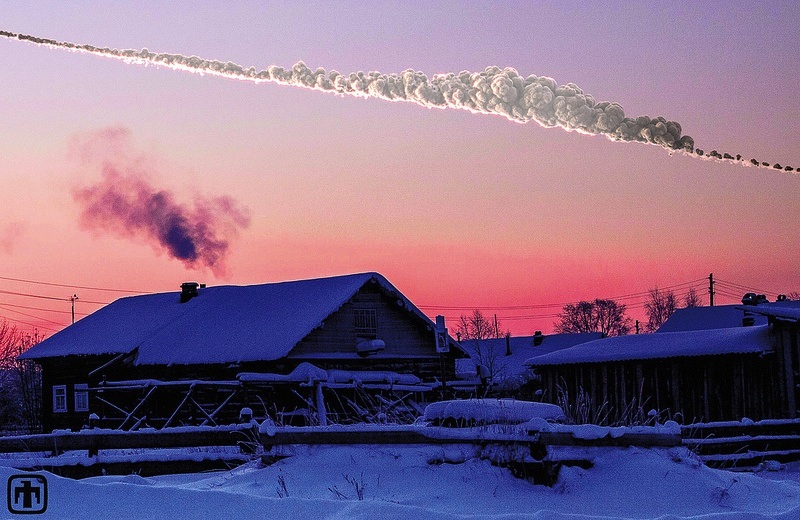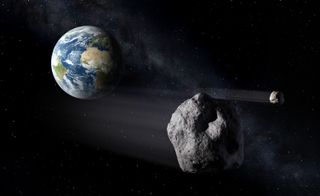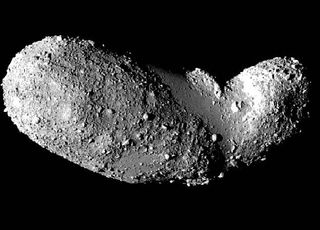
United Nations Takes Aim at Asteroid Threat to Earth

As the anniversary of last year's surprise Russian meteor explosion nears, a United Nations action team is taking steps to thwart dangerous space rocks, including setting up a warning network and a planning advisory group that would coordinate a counterpunch to cosmic threats.
A global group of experts on near-Earth objects (NEOs) met in Vienna Feb. 10 to11 for the 51st session of the United Nations' Scientific and Technical Subcommittee of the Committee on the Peaceful Uses of Space.
The meeting came just a few days before the one-year anniversary of the Russian meteor impact. On Feb. 15, 2013, a 65-foot-wide (19 meters) space rock detonated without warning over the city of Chelyabinsk, injuring more than 1,200 people and bringing home the reality of the asteroid threat to much of the world. [Photos: Russian Meteor Explosion of Feb. 15, 2013]
The plans the experts discussed have taken shape over a decade of work by the UN Action Team on Near Earth Objects, known as Action Team 14. AT-14 was established in 2001 and has crafted a roster of recommendations for an international response to the asteroid impact threat.
Establishing an International Asteroid Warning Network (IAWN) is considered to be a critical step in collecting and sharing information about potentially hazardous NEOs.
In the event that an Earth-threatening space rock is detected, the UN Committee on the Peaceful Uses of Space could help to facilitate a spacecraft mission intended to deflect that object from its collision course with Earth, experts say.
The primary purpose of a Space Mission Planning Advisory Group (SMPAG) — pronounced "same page" — is to prepare for a worldwide response to a NEO threat through the exchange of information, development of options for collaborative research and mission opportunities, and to conduct NEO threat mitigation planning activities.
Get the Space.com Newsletter
Breaking space news, the latest updates on rocket launches, skywatching events and more!

Major step forward
"My personal 'achievement of the year' is already done," said Detlef Koschny, head of the NEO segment within the ESA/ESTEC's Space Situational Awareness Program office in Noordwijk, The Netherlands.
ESA hosted on Feb. 6-7 the first official meeting of the SMPAG at the European Space Operations Center in Darmstadt, Germany, Detlef told SPACE.com. "And we now do have a group established, with a first idea on the work plan for the future!"
Still, there's more work to do.
"All participants still have to go back home and get the terms of reference formally approved, but we have a final version of the document…the 'draft' has disappeared," Detlef said. "This is a major step forward for this planet to be able to defend itself from a possible asteroid impact threat."

The creation of the SMPAG was reported to the Action Team-14 at the UN meeting in Vienna "and welcomed by all participants," said Gerhard Drolshagen, also of the NEO segment in Noordwijk.
"The formation of this group is seen to come at the right time, and SMPAG membership will certainly grow quickly," Drolshagen told SPACE.com.
"It was emphasized by several participants in the Committee on the Peaceful Uses of Space that the NEO threat concerns everyone and international coordination and cooperation is essential in this field," Drolshagen said.
The next SMPAG meeting will be held in Vienna this coming June. Participants will focus on the exchange of information on relevant activities in the field of NEO hazard mitigation and on the future work plan.
Leonard David has been reporting on the space industry for more than five decades. He is former director of research for the National Commission on Space and is co-author of Buzz Aldrin's new book "Mission to Mars – My Vision for Space Exploration" published by National Geographic. Follow us @Spacedotcom, Facebook or Google+. Originally published on Space.com.
Join our Space Forums to keep talking space on the latest missions, night sky and more! And if you have a news tip, correction or comment, let us know at: community@space.com.

Leonard David is an award-winning space journalist who has been reporting on space activities for more than 50 years. Currently writing as Space.com's Space Insider Columnist among his other projects, Leonard has authored numerous books on space exploration, Mars missions and more, with his latest being "Moon Rush: The New Space Race" published in 2019 by National Geographic. He also wrote "Mars: Our Future on the Red Planet" released in 2016 by National Geographic. Leonard has served as a correspondent for SpaceNews, Scientific American and Aerospace America for the AIAA. He has received many awards, including the first Ordway Award for Sustained Excellence in Spaceflight History in 2015 at the AAS Wernher von Braun Memorial Symposium. You can find out Leonard's latest project at his website and on Twitter.












